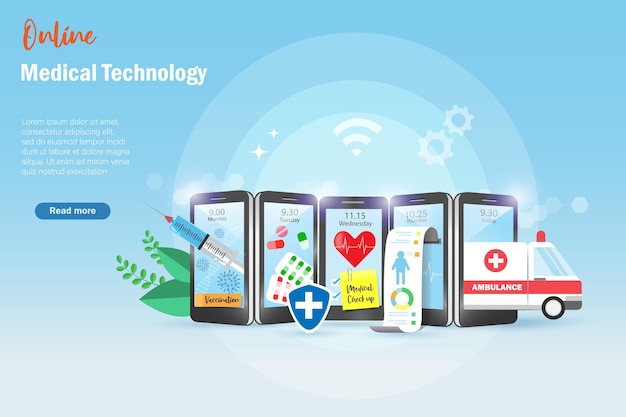The Rise of Subscription-Based Healthcare and Its Influence On Client Care
As medical care evolves, the subscription-based version is getting traction, assuring to change patient treatment by offering predictability and availability. The potential for these versions to reshape health care distribution raises pushing inquiries about their long-term sustainability and inclusivity. Are these subscription solutions the future of health care, or do they risk leaving susceptible populaces behind?
Understanding Registration Healthcare Versions
Understanding the idea of subscription healthcare designs involves checking out a transformative method to clinical services that highlights affordability and accessibility. These models, frequently referred to as direct medical care (DPC) or attendant medication, have actually arised as ingenious choices to traditional fee-for-service medical care systems. Subscription healthcare allows individuals to pay a fixed regular monthly or annual charge for a specified set of clinical solutions, which might consist of limitless office sees, regular examinations, and fundamental laboratory tests, without the demand for typical insurance payment.
The framework of registration health care versions is designed to enhance patient treatment by getting rid of third-party payers and complex invoicing codes, consequently decreasing management burdens. Doctor can concentrate much more on individual care, cultivating stronger patient-provider relationships. This design likewise advertises preventative care by urging normal visits, as the financial barrier of per-visit charges is eliminated.
The membership design commonly empowers health care companies to manage smaller client panels, allowing for even more individualized treatment. It straightens financial rewards with person health outcomes, as carriers are encouraged to maintain person fulfillment and wellness. Overall, comprehending membership healthcare designs calls for acknowledging their prospective to improve how care is provided and accessed.
Advantages for Carriers and patients

For suppliers, subscription-based designs supply the chance to grow patient-provider connections. With a steady earnings stream, healthcare specialists can devote more time per person, bring about an extra detailed and tailored treatment experience. This design also decreases dependence above patient volumes, easing exhaustion and enhancing task complete satisfaction. The focus on preventive treatment within subscription plans can lead to far better client end results and reduced lasting health care prices. By concentrating on continual treatment, suppliers can address problems prior to they rise, eventually benefiting the medical care system in its entirety by lowering the problem on emergency and acute care solutions.
Worries and difficulties
While subscription-based health care models present countless advantages, they also come with a set of difficulties and issues that have to be attended to. This raises moral questions about equitable accessibility to health care solutions.
Financial sustainability of subscription-based versions is an additional problem. Suppliers have to balance the fixed revenue from registrations with the variable expenses of medical care solutions, which might change because of unexpected medical demands. This can create stress to limit services or increase costs, possibly impacting client complete satisfaction and care high quality.
Additionally, regulatory oversight of subscription-based healthcare versions is still evolving. Attending to these challenges is critical for the fair and effective execution of subscription-based health care.
Influence On Patient-Doctor Relationships
One considerable influence of subscription-based health care versions on patient-doctor partnerships is the capacity for improved continuity and individualized treatment. By embracing a membership design, medical professionals can manage a smaller client panel, permitting for more dedicated time with each person. This see page increased accessibility promotes a much deeper understanding of a client's clinical background, way of life, and preferences, making it possible for a lot more tailored therapy plans and interventions.

Nonetheless, it is very important to acknowledge that while subscription-based designs might benefit those who can afford them, they could accidentally widen health care variations. Clients who are incapable to take part in these models might experience reduced access to individualized care, potentially impacting their connections with doctor. Therefore, while the membership model offers promising benefits for patient-doctor relationships, it also postures difficulties that need to be dealt with to guarantee fair health care access.
Future of Health Care Accessibility

The function of innovation can not be ignored in this transformation. Telemedicine platforms and electronic wellness documents help with seamless interaction in between people and doctor, damaging down logistical and geographical obstacles. In addition, developments in expert system and information analytics can even more individualize healthcare by anticipating patient requirements and optimizing therapy strategies.
Nonetheless, the future of healthcare accessibility additionally offers challenges, such as making certain equity throughout different socio-economic groups. Policymakers and medical care suppliers need to team up to bridge the electronic divide, making certain that subscription-based versions remain inclusive and budget-friendly. As these systems grow, they hold the promise of making healthcare much more easily accessible, effective, and patient-centric.
Conclusion
Subscription-based healthcare designs are reshaping patient care by giving a secure cost structure and boosting availability. These designs reinforce patient-provider connections with individualized care and normal visits, emphasizing preventative health and wellness. Regardless of these benefits, challenges such as availability problems for low-income populaces and the requirement for equitable healthcare options persist. The surge of subscription-based healthcare motivates positive client interaction, which has the potential to improve individual results and complete satisfaction, indicating a transformative change in health care delivery.
As health care evolves, the subscription-based design is acquiring grip, assuring to transform patient treatment by providing predictability and access.Subscription-based healthcare designs provide distinct benefits for both companies and patients, boosting weblink the general medical care experience.As healthcare systems evolve, the future of health care gain access to often pivots on the assimilation of innovative models and modern technologies.Subscription-based medical care models are improving patient care by providing a steady expense framework and boosting ease of access. The rise of subscription-based healthcare urges proactive person involvement, which has the prospective to enhance person results and fulfillment, signaling a transformative shift in healthcare distribution.